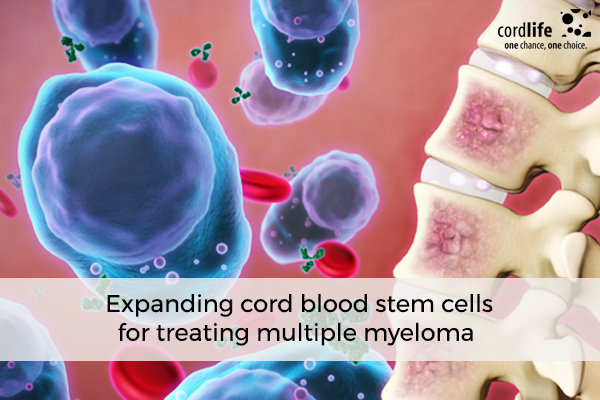Table of Contents
Stem cells are the young and undifferentiated cells which have the ability to develop into different types of cells in the human body. These stem cells can be extracted from various sources such as embryo (embryonic stem cells), bone marrow (adult stem cells) and umbilical cord blood (cord blood stem cells). These stem cells have been approved for treating over 80+ diseases that include blood disorders, immunological and metabolic disorders.
Multiple myeloma is one among the list of disorders which can be treated using stem cells. It is a type of cancer that attacks plasma cells (a type of white blood cells). These plasma cells make antibodies which help the body to fight against infections. However, in multiple myeloma cancer cells are accumulated in the bone marrow and crowd of the healthy cells that produce abnormal proteins which result in multiple complications.
Who is at risk?
Prevalence of multiple myeloma occurs in the people those who are at the age of 60, men are likely to be prone, black people are affected more than white people and having a family history of myeloma.
Symptoms and complications that are commonly seen at an early stage of this disease such as
- pain in the bone of the spine or chest
- constipation
- loss of appetite
- fatigue
- weight loss
- feeling excess thirsty
However, serious complications may arise at later stages due to an increase in the severity of the disease which may include
- Reduces body’s ability to fight with infections.
- Occurrence of pain in the bone, thinning of bones and breakage.
- Kidney dysfunction may lead to kidney failure
- Anaemia
How stem cells can help in multiple myeloma treatment?
For the treatment of multiple myeloma by stem cells, at first the infected cells are destroyed, then the stem cells are infused into the body which regenerates to replace the damaged cells. However, using adult stem cells can cause some serious complications such as Graft vs Host Disease which affect the chances of successful treatment and may result in rejection.
Recent studies show that Umbilical cord blood stem cells have the potential to be used as an alternative to adult stem cells due to several benefits. It is easy to collect which takes 5-10 minutes and does not affect the birthing process. The collection of cord blood is safe and risk-free for both the mother and baby. Also, cord blood stem cells do not possess any risk of graft vs host disease or any type of infection.
Despite these benefits, a limited quantity of stem cells obtained from Umbilical Cord Blood restricts the application in treatment, as multiple myeloma most commonly occurs in people over 60. To further extend the benefits of Umbilical Cord Blood for treating such adult patients, several experiments / clinical trials are progressing to considerably increase the quantity of Umbilical Cord Blood hematopoietic stem cells.
A group of scientists led by Dr. Jean Roy, a hematologist at the University of Montreal in Canada is performing research to expand the number of stem cells harvested from the cord blood of newborn babies by using UM171 molecule. UM171 is a molecule, discovered by Dr. Guy Sauvageau to enhance the expansion of hematopoietic stem cells by almost 30 times. The reason behind using the newborn cord blood stem cells is that the immune system of the babies is immature and has fewer chances of infections. Also, these stem cells are associated with a powerful anti-cancer effect.
During this study, the new molecule is used for expanding the cord blood stem cells in the lab which will then be introduced in the body of the patient and is expected to have fewer complications.
The positive results from this research will make the stem cell therapy from umbilical cord blood an effective treatment option to treat myeloma patients and overcome the quantity limitation of umbilical cord blood stem cells for adult treatment.
